Wearing Guidelines

Is there a standard guideline for wearing PPE during COVID-19 pandemic ?
The text provides a summary of the standard guidelines for wearing Personal Protective Equipment (PPE) during the COVID-19 pandemic. The guidelines are designed to protect healthcare workers, first responders, and other essential workers from getting infected with the virus. The levels of PPE required vary depending on the level of risk involved in different situations, ranging from low risk to high risk. The text also provides best practices for wearing PPE, including hand hygiene, putting on and removing PPE in the correct order, and proper disposal of PPE items.
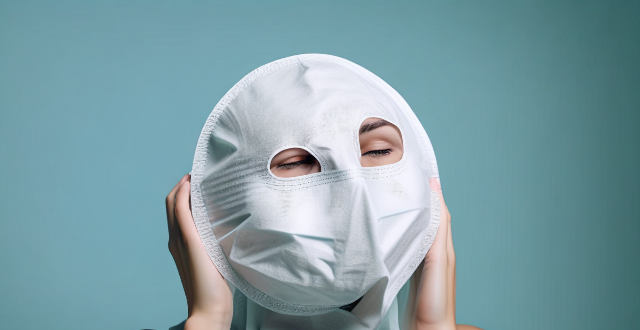
Can wearing a face mask for a long time cause breathing problems ?
Wearing a face mask for extended periods can cause breathing issues, especially if the mask is not fitted properly or worn incorrectly. There are various types of face masks, each with its own potential impact on breathing, including surgical masks, N95 respirators, and cloth masks. Prolonged use of face masks can lead to increased resistance, humidity, and reduced oxygen intake. To minimize potential breathing issues while wearing a face mask, it's important to ensure proper fit, choose breathable materials, take breaks, stay hydrated, and consult a healthcare professional if necessary. Overall, the benefits of source control and infection prevention should be balanced against any minor discomforts experienced.
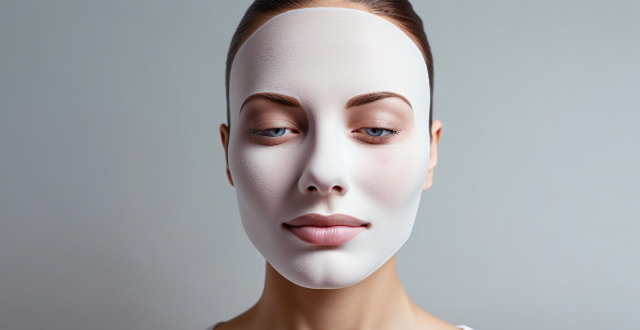
Are there any health risks associated with wearing a face mask for an extended period ?
Wearing a face mask for an extended period can have potential health risks such as skin irritation, difficulty in breathing, reduced oxygen intake, and psychological effects. However, these risks are generally minimal when compared to the benefits of wearing a mask in preventing the spread of infectious diseases. It is important to choose a mask that fits well and is made of breathable materials to minimize any potential health risks.

How does wearing a face mask affect oxygen levels in the body ?
Wearing a face mask is an essential practice during the COVID-19 pandemic to prevent the spread of the virus. However, some people have concerns about whether wearing a mask affects oxygen levels in the body. In this article, we will explore how wearing a face mask affects oxygen levels in the body and provide evidence to support our claims. There are two main ways in which wearing a face mask can affect oxygen levels: decreased airflow and increased carbon dioxide retention. However, studies have shown that wearing a face mask does not significantly reduce oxygen levels in healthy individuals who are not exercising heavily. In healthy individuals, wearing a face mask does not pose any significant risk of low oxygen levels. However, if someone has underlying respiratory conditions such as asthma or COPD, they may experience shortness of breath or other symptoms when wearing a face mask. To ensure adequate oxygen levels while wearing a face mask, one can follow these tips: choose the right type of mask, maintain good hydration, exercise regularly, avoid heavy exercise, and consult with healthcare professionals if necessary.

Is it necessary to wear a face mask while exercising outdoors ?
The necessity of wearing a face mask while exercising outdoors depends on several factors, including the current health situation, personal preferences, and local guidelines. Key points to consider: - COVID-19 transmission risks: Aerosol transmission and proximity to others can increase the risk of infection. Wearing a mask can help reduce this risk. - Personal preferences: Comfort level and medical conditions should be considered when deciding whether to wear a mask while exercising. Consult with your healthcare provider if you have any concerns. - Local guidelines: Check your local government's guidelines for outdoor exercise during the pandemic and be aware of community standards regarding mask-wearing in public spaces. Overall, whether or not to wear a face mask while exercising outdoors is a personal decision that should take into account the current health situation, personal preferences, and local guidelines. By considering these factors, you can make an informed choice that balances your safety and comfort needs.
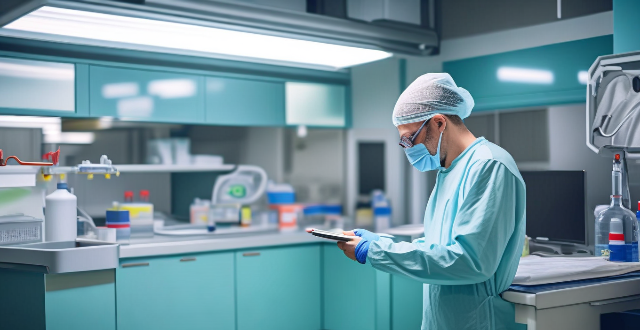
What are the benefits of wearing protective clothing in a laboratory setting ?
In a laboratory setting, wearing protective clothing is crucial for the safety and well-being of individuals working with hazardous materials or conducting experiments that may pose risks. The benefits of wearing protective clothing include protection from chemical spills and splashes, biological hazards, personal comfort and hygiene, and compliance with safety regulations. By prioritizing safety through proper protective clothing, laboratory personnel can work more confidently and efficiently while minimizing potential risks to their health and well-being.

Are there any health risks associated with wearing a fitness tracker ?
The article discusses potential health risks associated with wearing fitness trackers, including radiation exposure, skin irritation and allergies, and distracted driving. It provides tips on how to minimize these risks, such as limiting exposure time, choosing low-power modes, using hypoallergenic materials, adjusting the fit properly, giving skin regular breaks, turning off non-essential features before driving, using Do Not Disturb mode, and putting the phone away while driving.
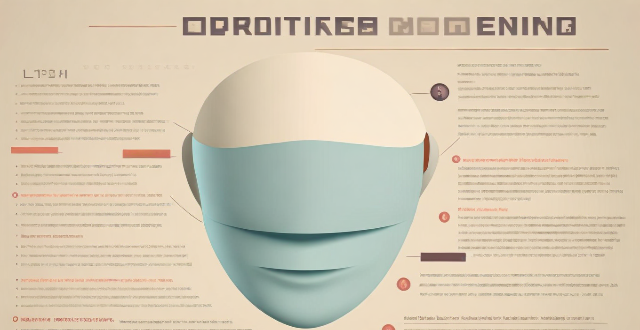
How often should you change your face mask ?
The article discusses the importance of changing face masks frequently to maintain their effectiveness in protecting against COVID-19. Factors such as the type of mask, level of exposure, personal hygiene, and symptoms of illness determine how often a mask should be changed. Disposable masks are designed for single use, cloth masks should be washed after each use or at least once a day, and N95 respirators have specific guidelines for replacement. It is crucial to follow proper guidelines to prevent the spread of infection and keep oneself and others safe.

Can wearing a face mask cause skin irritation or acne ?
Wearing a face mask can cause skin irritation or acne due to friction, pressure, heat, moisture buildup, and bacterial growth. To prevent these issues, choose breathable materials, wash your face regularly with gentle cleansers, use oil-free skincare products, change your mask frequently, and consult a dermatologist if necessary.

What is the importance of wearing seat belts in vehicles ?
Wearing seat belts in vehicles is crucial for reducing the risk of serious injuries or death in crashes. They protect against head, brain, chest, and abdominal injuries by preventing ejection and distributing impact force. This practice is also legally required and can affect insurance payouts. Drivers should set an example for passengers, especially children, to promote safe driving habits. Buckling up is a simple, effective way to protect oneself and others.

How can companies implement TCFD guidelines in their financial statements ?
The Task Force on Climate-related Financial Disclosures (TCFD) was established to develop global climate-related financial disclosures for companies. Implementing TCFD guidelines in financial statements involves understanding the framework, assessing climate-related risks and opportunities, integrating this information into financial reporting, and engaging stakeholders. Companies should disclose governance, identify risks and opportunities, provide strategies and metrics, and present financial impacts of climate change. They should also assess physical and transition risks, integrate climate-related metrics into financial statements, revise risk disclosures, and provide scenario analysis. Engaging stakeholders and providing clarity on assumptions and methodologies used in scenario analysis is crucial. By following these steps, companies can provide investors and stakeholders with a clear picture of their exposure to climate-related risks and opportunities.

How can I maintain a professional appearance while staying comfortable throughout the day ?
Maintaining a professional appearance while staying comfortable throughout the day is crucial in the workplace. Here are some tips: 1. Dress appropriately by choosing well-fitted clothes that are appropriate for your job and industry, avoiding overly casual or revealing clothing, and sticking to neutral colors like black, gray, navy, or beige. Pay attention to grooming by keeping your hair neat and tidy, making sure your facial hair is well-groomed if you choose to wear it, and applying deodorant and keeping your breath fresh with mints or gum. 2. Invest in quality footwear by wearing comfortable shoes that are supportive, such as loafers or low heels, avoiding high heels or shoes that pinch your toes, and breaking in new shoes gradually by wearing them around the house before wearing them to work. Take care of your feet by wearing socks or stockings that wick away moisture and prevent blisters, using shoe inserts or insoles for extra cushioning and support, and giving your feet a break by taking off your shoes during lunch breaks or when you're at your desk. 3. Stay hydrated and nourished by drinking plenty of water and bringing a water bottle to work to refill it throughout the day, avoiding sugary drinks and caffeine which can dehydrate you. Snack smartly by packing healthy snacks like fruits, nuts, or granola bars to avoid midday cravings for unhealthy foods, and eating small meals throughout the day instead of three large ones to maintain energy levels. 4. Take breaks and stretch by getting up from your desk every hour or so and taking a short walk or stretch, using your lunch break to go for a walk outside or do some light exercise. Practice good posture by sitting up straight with your feet flat on the floor and your shoulders relaxed, using a chair with good back support and adjusting the height if necessary, and taking breaks from staring at a computer screen by looking away for a few seconds every 20 minutes.
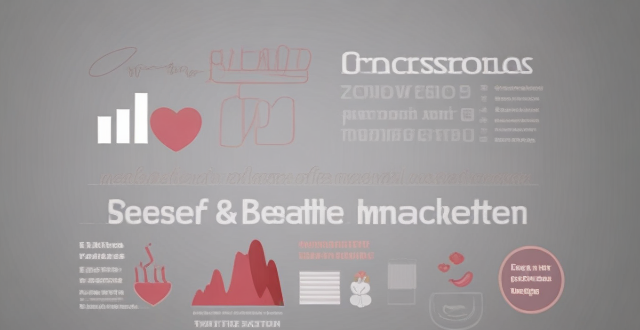
Are there any health benefits to wearing an Apple Watch ?
The Apple Watch offers several health benefits, including heartThe Apple Watch offers several health benefits, including heart recording, fitness tracking, sleep including heart rate monitoring, ECG recording, fitness tracking, sleep analysis, and stress management. However, these features should not replace professional medical advice or treatment.

What are some luxurious lifestyle choices made by celebrities ?
Celebrities are known for their lavish lifestyles and extravagant choices, including owning private islands, driving exotic cars, wearing designer clothing and accessories, and living in mansions and luxury homes. Some famous examples include Richard Branson owning Necker Island, Jay Leno having an extensive collection of over 200 cars, Beyoncé frequently wearing haute couture gowns, and Taylor Swift's mansion featuring a private beach. These luxurious lifestyle choices reflect their wealth, status, and influence.

What constitutes proper cell phone etiquette for women in public ?
Proper cell phone etiquette is essential for women in public to maintain a professional and respectful image. Here are some guidelines to follow: - Keep your phone on silent or vibrate mode to avoid disturbing others and be considerate of the environment. - Use headphones or earbuds when listening to music or watching videos to respect personal space and avoid disturbing others. - Avoid talking loudly on your phone and step away from crowded areas if possible. - Be mindful of your surroundings and avoid using your phone during meetings or events. By following these guidelines, you can maintain a professional and respectful image while using your cell phone in public.

What are the rules and etiquette of playing golf ?
Golf is a sport that embodies tradition, respect, and etiquette. Understanding the rules and etiquette of golf is crucial for any player, whether you're a seasoned pro or a beginner. The basic rules include instructions from the starter, teeing off, out of bounds and lost balls, water hazards, ball movement, and putting. Etiquette guidelines include maintaining a reasonable pace of play, remaining silent when someone is preparing to hit, repairing divots and ball marks, searching for lost balls, staying on cart paths and avoiding bunkers, smoothing the sand in bunkers, marking your ball on the green, being mindful of your line and others', holding the flagstick, accurately filling out scorecards, cleaning and storing clubs properly, and tipping appropriately for services. By adhering to these rules and etiquette guidelines, you contribute to maintaining the integrity and enjoyment of the game for everyone involved.

How can I ensure safe travel to an island during COVID-19 ?
To ensure safe travel to an island during COVID-19, research the destination's situation, choose a safe mode of transportation, pack essential items, follow safety guidelines, and stay informed about local regulations.
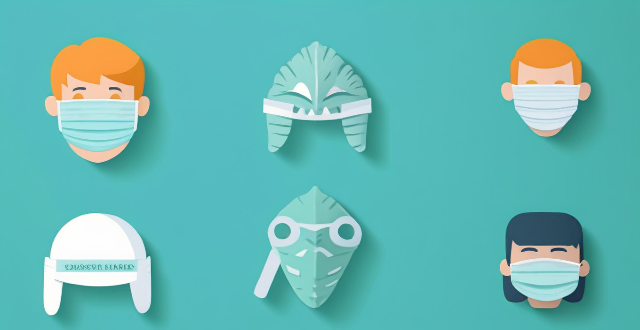
Is it safe to reuse disposable face masks after being out in public ?
The safety of reusing disposable face masks depends on several factors, such as the type of mask, how long you've been wearing it, and whether or not you've touched the outside of the mask. The CDC recommends replacing your disposable face mask as soon as it becomes moist or dirty. While it may be tempting to reuse disposable face masks to conserve resources, doing so could compromise their effectiveness. It is generally recommended to follow the guidelines provided by health organizations and experts and prioritize your health and safety by using clean and effective personal protective equipment.

What are the most effective ways to protect against radiation exposure ?
Radiation exposure can be harmful to our health, and it is essential to take measures to protect ourselves from its effects. Here are some of the most effective ways to protect against radiation exposure, including using shielding materials, maintaining a safe distance, wearing protective clothing, following safety guidelines, getting regular check-ups, eating a healthy diet, and staying informed.

Is social distancing a long-term solution for controlling the spread of viruses ?
Social distancing is an effective measure for controlling the spread of viruses in the short term, but its feasibility as a long-term solution depends on various factors such as the nature of the virus, availability of medical resources, and willingness of people to adhere to guidelines. Other measures such as mask-wearing, hand hygiene, contact tracing, regular testing, and vaccine development should also be considered alongside social distancing to effectively control the spread of viruses over time.

What kind of clothing should I pack for a trip to Africa ?
When packing for a trip to Africa, it's important to consider the climate and culture of the region you'll be visiting. Here are some essential clothing items to pack: - Lightweight and breathable fabrics such as cotton, linen, and rayon. - Long sleeve shirts and pants to protect your skin from the sun and insects. - A wide-brimmed hat to shade your face and neck. - Comfortable walking shoes or sandals with good support. - A light jacket or sweater for cooler evenings. - Sunglasses and sunscreen with high SPF protection. - Insect repellent to keep mosquitoes and other bugs at bay. It's also important to dress respectfully when traveling in Africa. Many African countries have conservative dress codes, especially in rural areas. Here are some tips to keep in mind: * Avoid wearing revealing or tight-fitting clothing. * Cover your shoulders and knees when visiting religious sites or conservative communities. * Women may want to bring a scarf or pashmina to cover their hair in certain situations. * Avoid wearing excessive amounts of jewelry or expensive accessories, as this can attract unwanted attention. The climate in Africa varies widely depending on the region and season. Here are some general guidelines for different seasons: Dry Season (November to April): * Lightweight clothing made of natural fibers like cotton and linen. * Shorts, skirts, and t-shirts for hot weather. * A light jacket or sweater for cooler evenings. * Sunglasses and sunscreen with high SPF protection. Wet Season (May to October): * Waterproof jacket or raincoat. * Quick-drying clothes that can be easily washed and dried. * Warm layers for cooler temperatures, especially in the evenings. * Insect repellent to keep mosquitoes and other bugs at bay. Year-Round Tips: * Pack clothing in neutral colors that can be mixed and matched easily. * Bring comfortable walking shoes or sandals with good support. * Don't forget a swimsuit if you plan on going to the beach or taking part in water activities. * Pack a small first aid kit with basic supplies like bandages, antiseptic wipes, and pain relievers.

How can I safely move an injured person without causing further harm ?
Moving an injured person requires caution and care to avoid causing further harm. Here are some guidelines to follow: 1. Assess the situation and determine whether it's necessary to move the person immediately. 2. Call for emergency medical services or ask someone else to do so. 3. Protect yourself by wearing appropriate protective gear, such as gloves and masks. 4. Get assistance from others who are nearby. 5. Use proper techniques to minimize the risk of further harm, such as keeping the spine straight and supporting the head and neck. 6. Use equipment designed for moving injured persons, such as a stretcher or backboard. 7. Be gentle and careful when handling the injured person to avoid exacerbating their injuries.

How often should I disinfect my home to prevent the spread of germs ?
To prevent the spread of germs in your home, it's important to disinfect high-touch surfaces daily, including doorknobs, light switches, countertops, bathroom fixtures, and electronic devices. Floors and carpets should be cleaned regularly as well, with hardwood floors mopped weekly and carpets vacuumed twice a week and steam cleaned monthly. Soft furnishings like couches and chairs should be vacuumed weekly, and bedding should be washed in hot water every week. In the kitchen and eating areas, cutting boards and utensils should be washed after each use, and dishes and cups should be cleaned after each meal. Laundry, including clothes and towels, should be washed immediately after wearing or use. Children's toys should also be disinfected regularly, with plastic toys wiped down weekly and plush toys washed monthly. When disinfecting, it's important to follow the instructions on the product label, avoid mixing cleaning products, wear gloves to protect your hands, ensure proper ventilation by opening windows or turning on fans, clean before disinfecting, use paper towels to avoid cross-contamination, don't forget to clean and disinfect trash cans, and sanitize sponges and brushes regularly. By following these guidelines, you can help prevent the spread of germs within your home and maintain a healthy environment for you and your family.
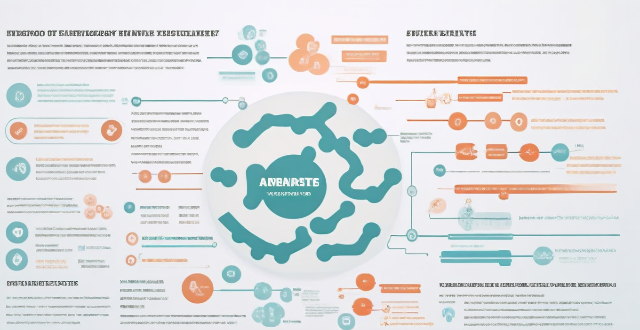
What measures are being taken to control the spread of virus variants ?
The emergence of virus variants is a significant concern globally. Various measures are being implemented to control their spread, including surveillance and genomic sequencing, testing and tracing, border controls and travel restrictions, vaccination efforts, public health measures, research and development, and education and messaging. These strategies aim to mitigate the impact of variants and protect populations from more severe outbreaks. It is crucial for everyone to stay informed and continue following public health guidelines to contribute to these efforts.

What are some tips for making science experiments at home for educational purposes ?
Science experiments are a great way to engage children in learning about the natural world around them. Here are some tips for conducting science experiments at home for educational purposes: ## 1\. Choose Age-Appropriate Experiments Select experiments that are suitable for your child's age and ability level. Younger children may enjoy simple experiments involving colors, shapes, and basic physical properties, while older children can tackle more complex concepts such as chemical reactions or electricity. ## 2\. Gather Materials in Advance Make sure you have all the necessary materials before starting the experiment. This will help avoid interruptions and frustration during the process. Create a list of required items and gather them ahead of time. ## 3\. Follow Safety Guidelines Safety should always be a top priority when conducting science experiments at home. Ensure that you and your child follow proper safety guidelines, such as wearing protective gear (e.g., goggles, gloves) and working in a well-ventilated area. ## 4\. Involve Your Child in the Process Encourage your child to participate in every step of the experiment, from planning to execution. This will not only make the experience more enjoyable but also help them develop critical thinking skills and problem-solving abilities. ## 5\. Observe and Record Results Observing and recording results is an essential part of any scientific experiment. Encourage your child to take notes throughout the process, documenting their observations and findings. This will help them understand the importance of data collection and analysis in science. ## 6\. Discuss Results and Implications After completing the experiment, discuss the results with your child. Ask questions about what they learned, how the experiment could be improved, and what implications their findings might have on real-world applications. This will help foster their curiosity and interest in science. ## 7\. Clean Up Properly Teach your child the importance of cleaning up after themselves by ensuring that all materials are properly disposed of and surfaces are wiped down. This will help maintain a safe and organized environment for future experiments.

What are the safety regulations for handling hazardous materials ?
The text provides a topic summary on safety regulations for handling hazardous materials, which are crucial to prevent accidents and protect workers, the environment, and the public. The key safety regulations discussed include personal protective equipment (PPE), storage and handling, transportation, disposal, and emergency response. Wearing appropriate PPE, storing hazardous materials in designated areas or containers, following transportation regulations, disposing of hazardous materials according to local, state, and federal regulations, having an emergency response plan in place, and reporting any accidents or spills involving hazardous materials to appropriate authorities are some of the essential guidelines for safe handling of hazardous materials. By following these guidelines, organizations can minimize the risk of accidents and ensure the safe handling of hazardous materials.

What are the key principles of biosafety management ?
Biosafety management is a set of practices and procedures designed to minimize the potential risks associated with handling biological materials in research, clinical, and industrial settings. The key principles of biosafety management include risk assessment, facility design and engineering controls, personal protective equipment (PPE), standard microbiological practices (SMP), training and education, and incident response plans. Risk assessment involves identifying and evaluating potential hazards associated with working with biological materials, including assessing the risk of exposure to pathogens, toxins, and other harmful substances. Proper facility design and engineering controls are essential for effective biosafety management, including designing laboratory spaces that minimize the risk of exposure to hazardous materials and implementing appropriate ventilation systems. Wearing appropriate personal protective equipment (PPE) is crucial for protecting workers from exposure to hazardous materials. Standard microbiological practices (SMP) are essential for maintaining a safe working environment when handling biological materials. Training and education are critical components of biosafety management, and all personnel who work with biological materials must receive appropriate training on biosafety practices. Having an incident response plan in place is essential for managing accidents or spills involving hazardous materials.

How can I stay safe during adventure travel activities ?
Adventure travel activities can be exciting and thrilling, but they also come with certain risks. To ensure your safety during these activities, it's important to take necessary precautions and follow some basic guidelines. Here are some tips on how to stay safe during adventure travel activities: 1. Research and plan ahead before embarking on any adventure travel activity. Check the weather conditions, terrain, and potential hazards. 2. Choose reputable operators for your adventure travel activity. Look for operators that are licensed, insured, and adhere to safety standards. 3. Follow safety guidelines provided by the operator during the activity. Wear protective gear such as helmets, harnesses, or life jackets. 4. Make sure you are physically fit and healthy enough to participate in the adventure travel activity. If you have any pre-existing medical conditions or injuries, consult with a doctor beforehand. 5. Pack essential gear and supplies for the adventure travel activity, including appropriate clothing, footwear, sunscreen, insect repellent, and first aid kit. 6. Stay alert and attentive during the adventure travel activity. Keep an eye out for potential hazards such as uneven terrain, loose rocks, or changing weather conditions. 7. Use common sense and trust your instincts during the adventure travel activity. If something feels too risky or dangerous, don't hesitate to back out or seek assistance from the guides or other participants. By following these tips, you can minimize the risks associated with adventure travel activities and enjoy a safe and memorable experience.

How do I choose the right personal protective equipment (PPE) for working with electricity ?
When working with electricity, it is crucial to choose the right personal protective equipment (PPE) to ensure your safety. Here are some guidelines to help you make the right choice: 1. Assess the risk level before choosing any PPE. 2. Choose appropriate footwear, such as insulated boots or shoes with non-conductive soles. 3. Wear insulating gloves, such as Class 00 or Class 1 gloves. 4. Use insulating tools and equipment, such as insulating wrenches and screwdrivers, mats, and barriers. 5. Wear protective clothing, such as flame-resistant clothing, long sleeve shirts, and long pants. 6. Use head protection, such as hard hats and face shields or safety goggles. 7. Follow the manufacturer's instructions when using PPE and ensure that all equipment is properly maintained and inspected regularly.